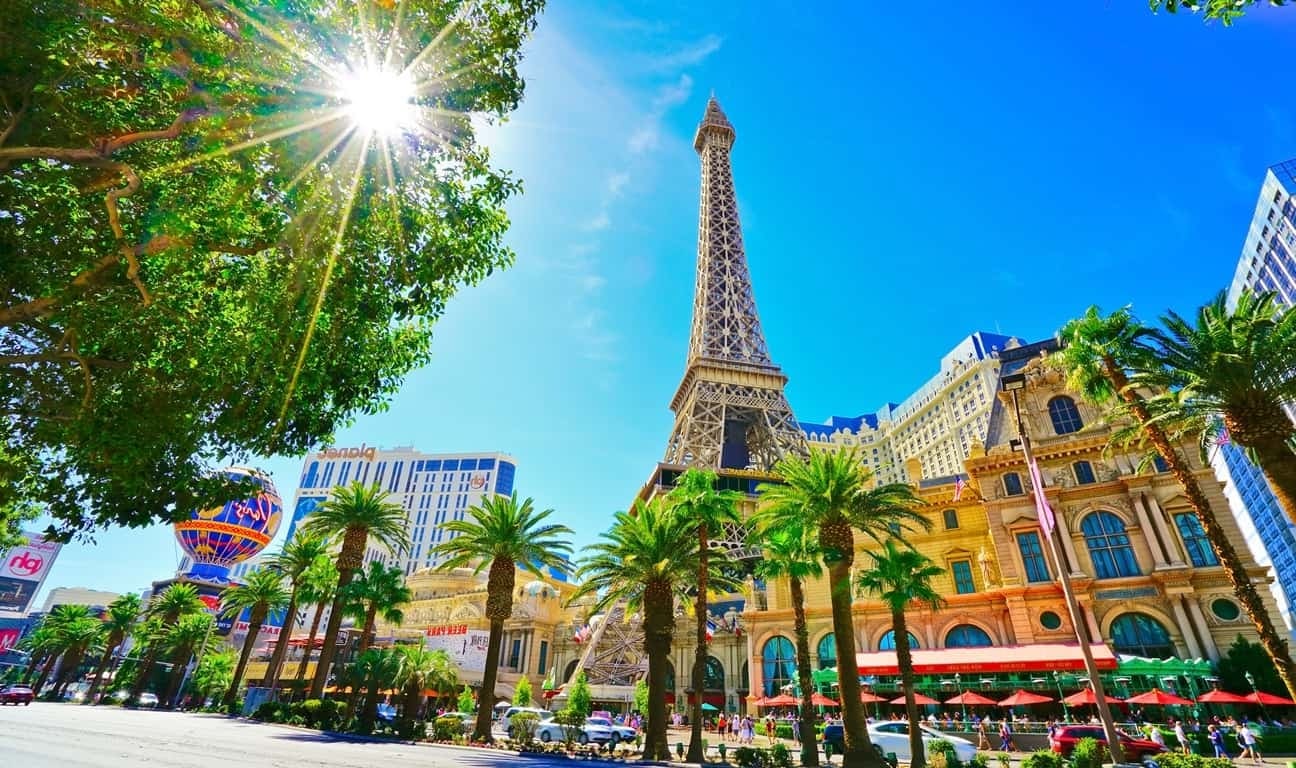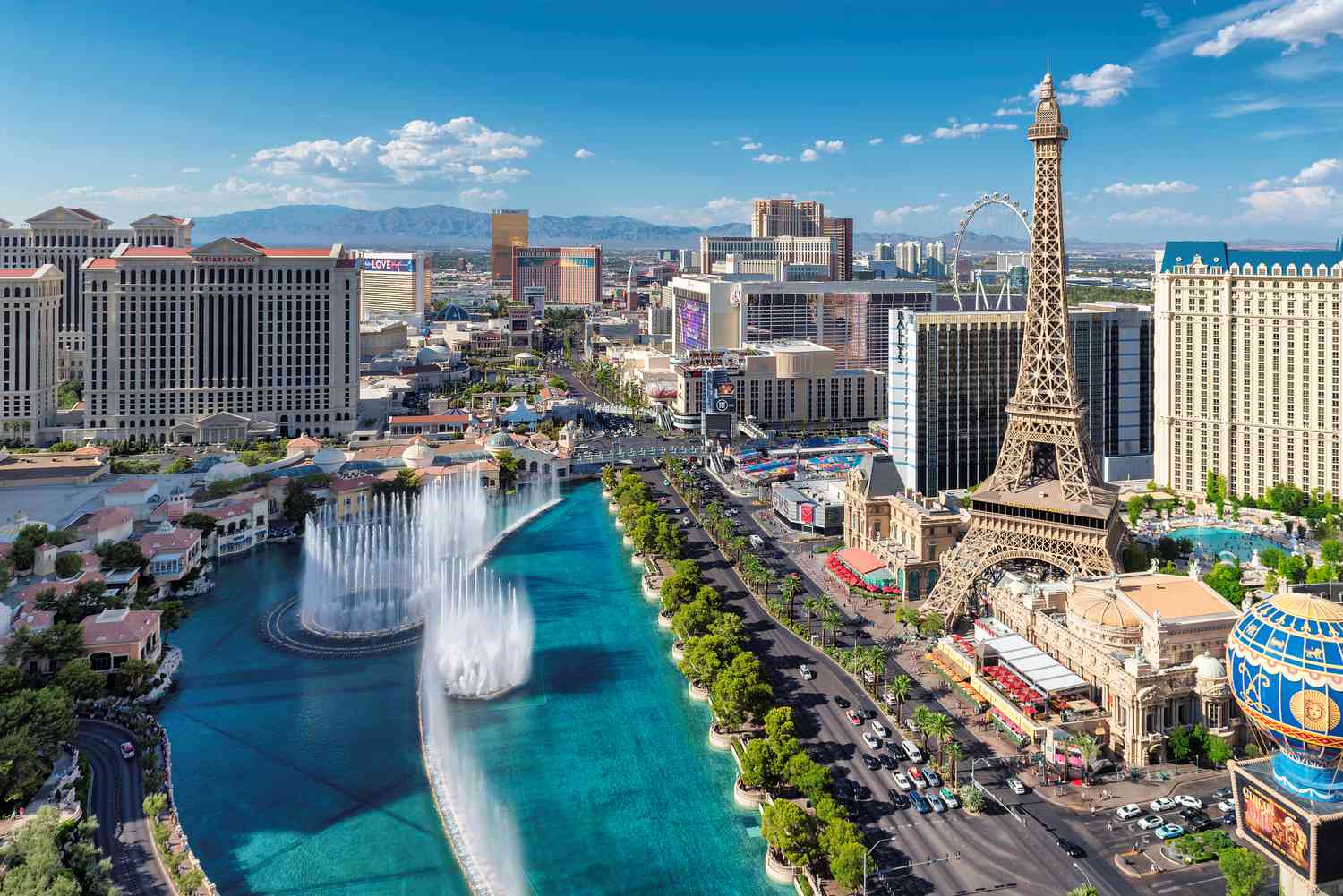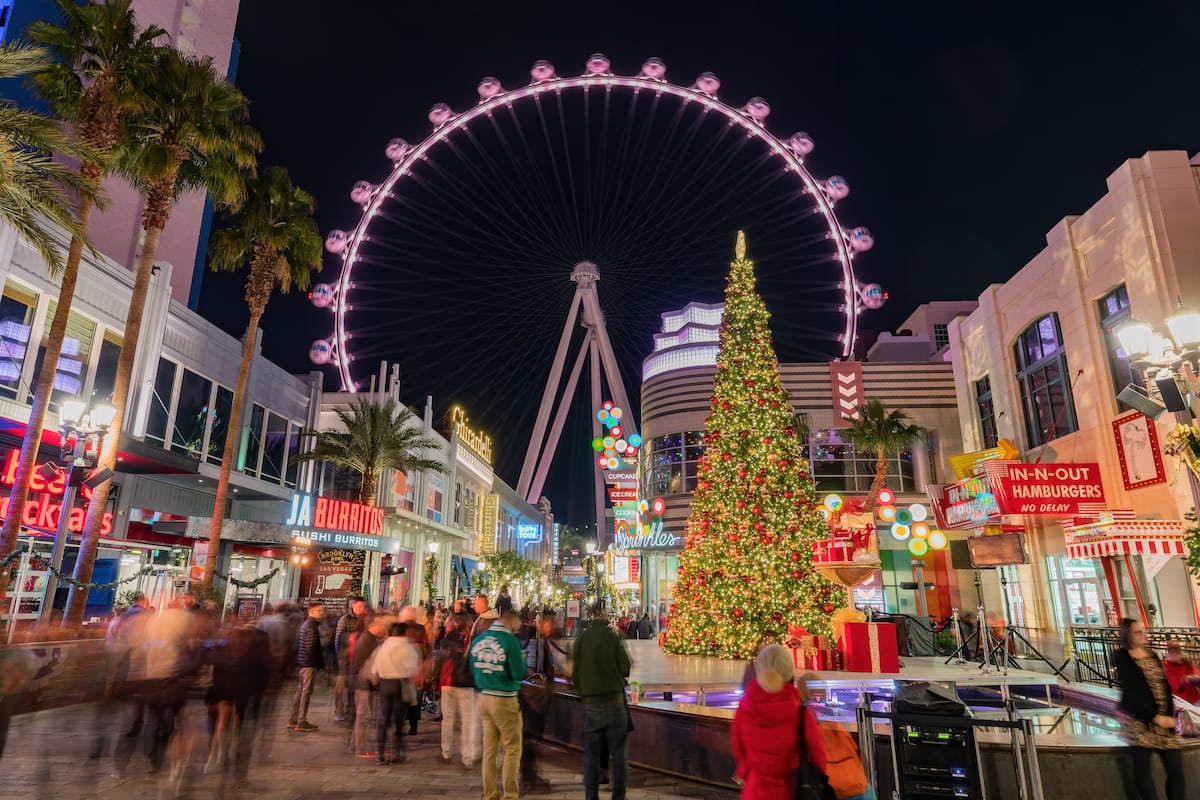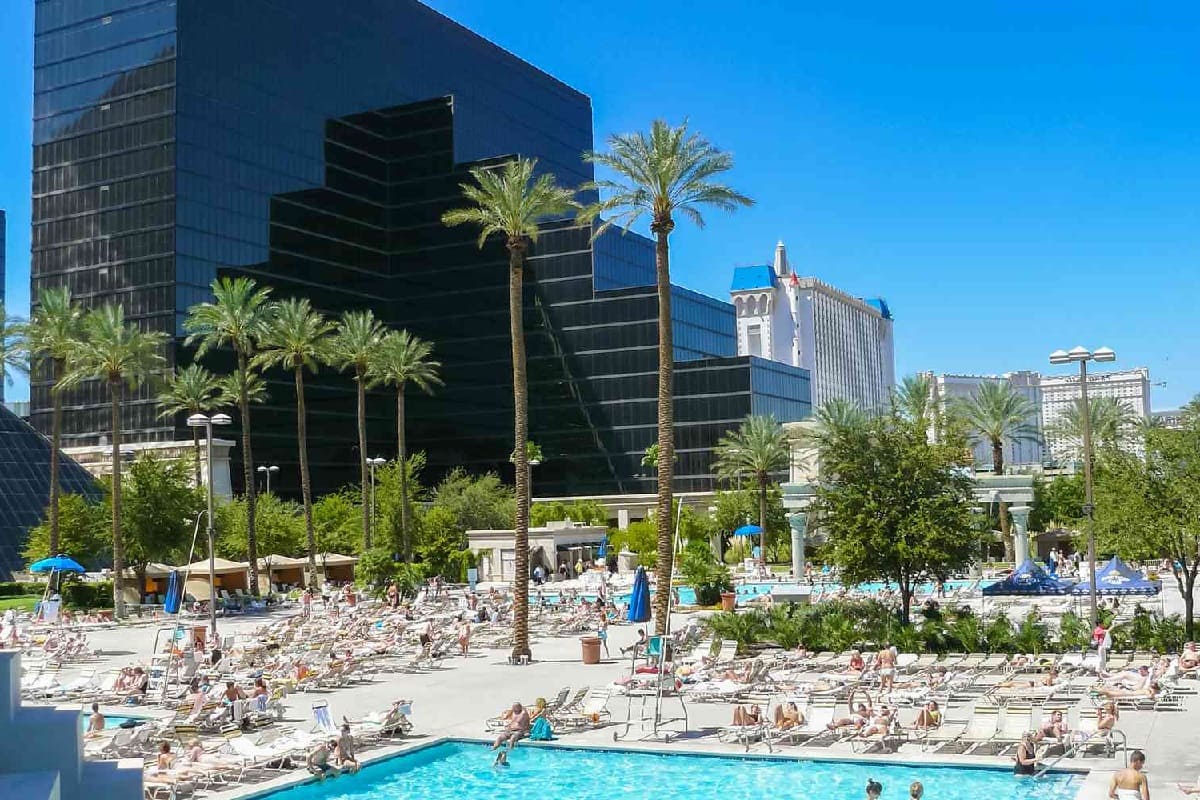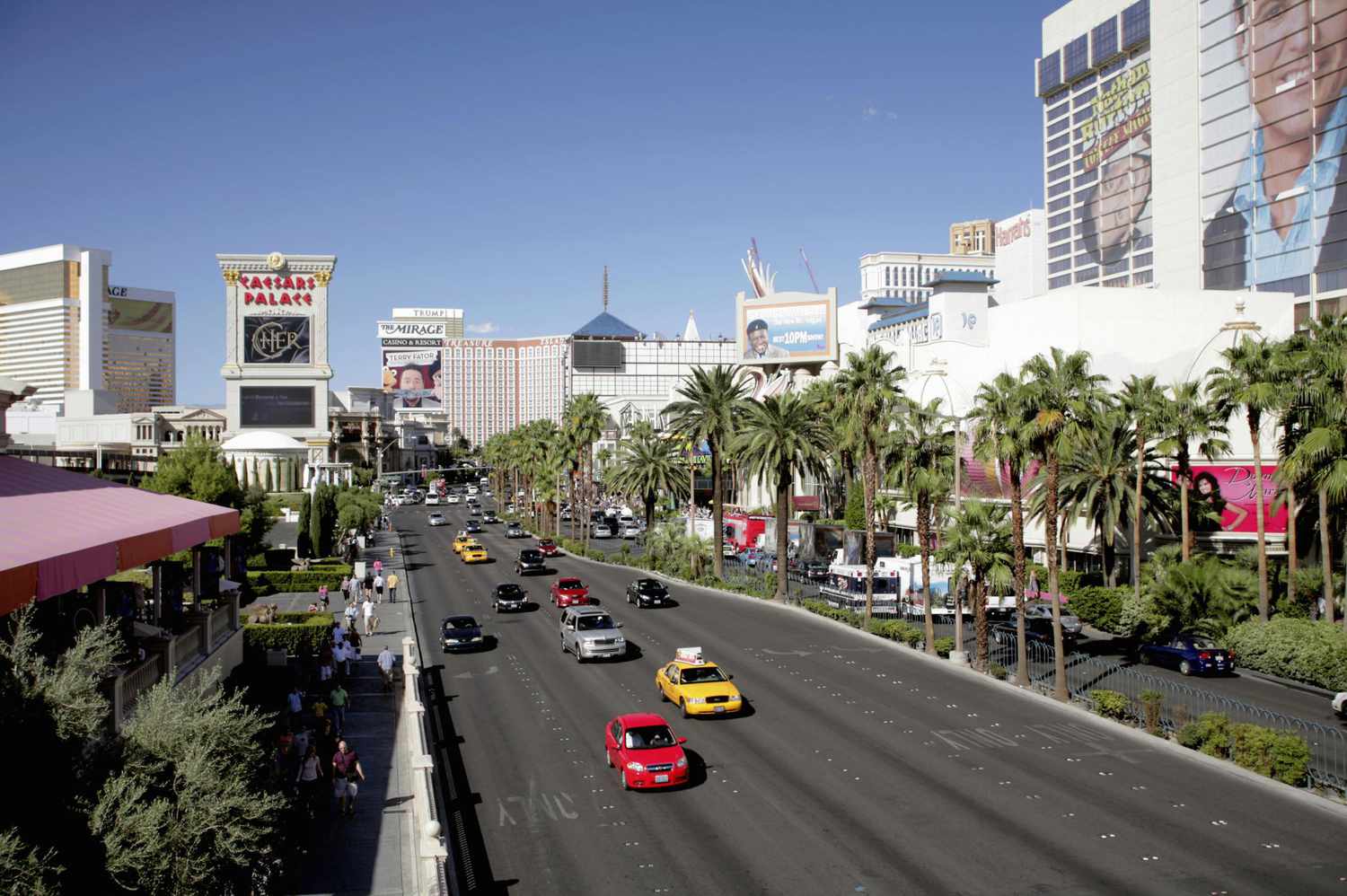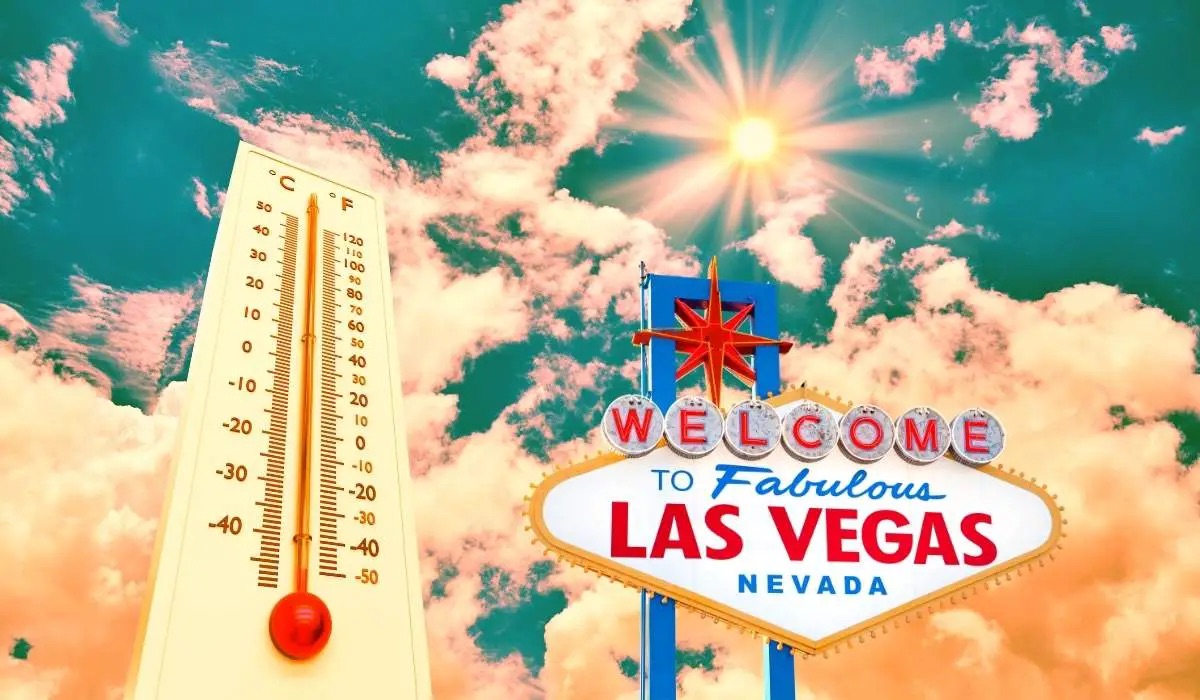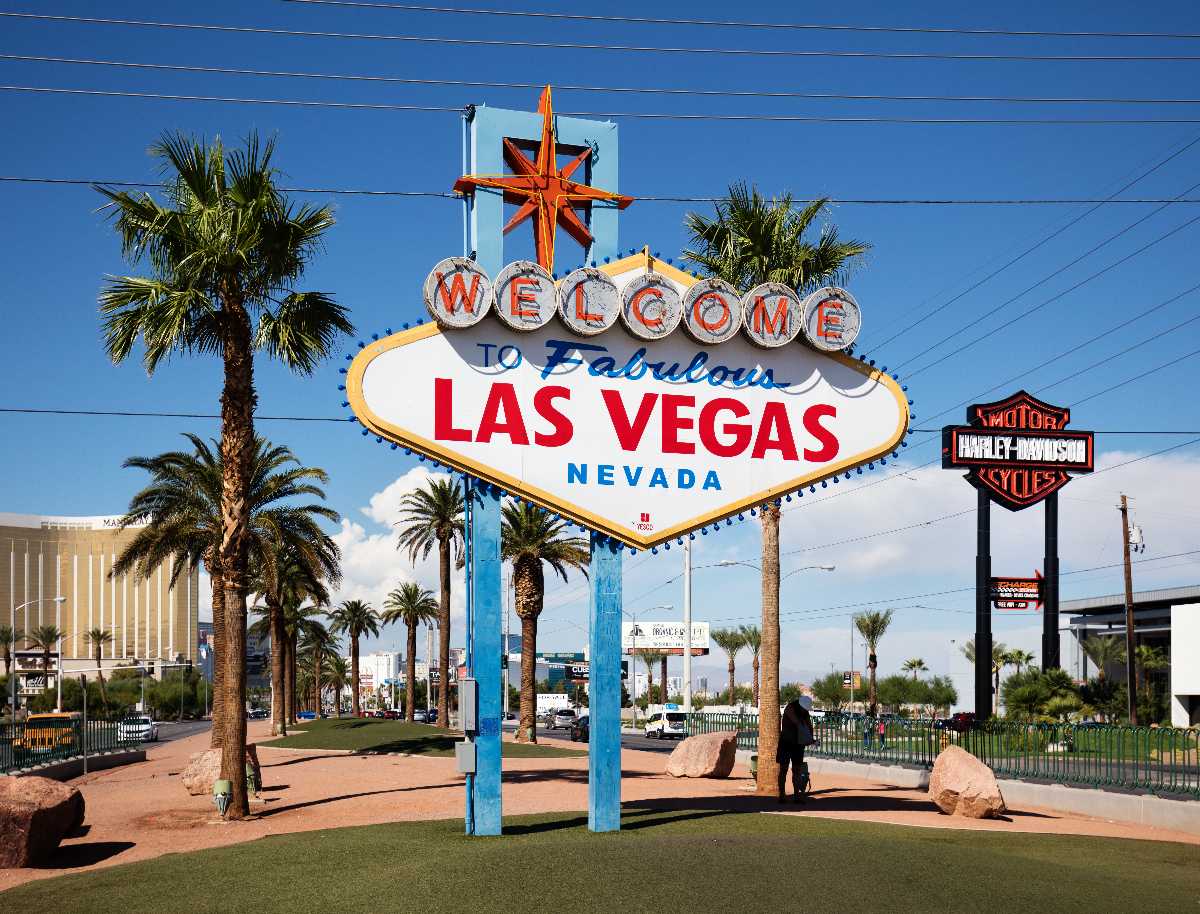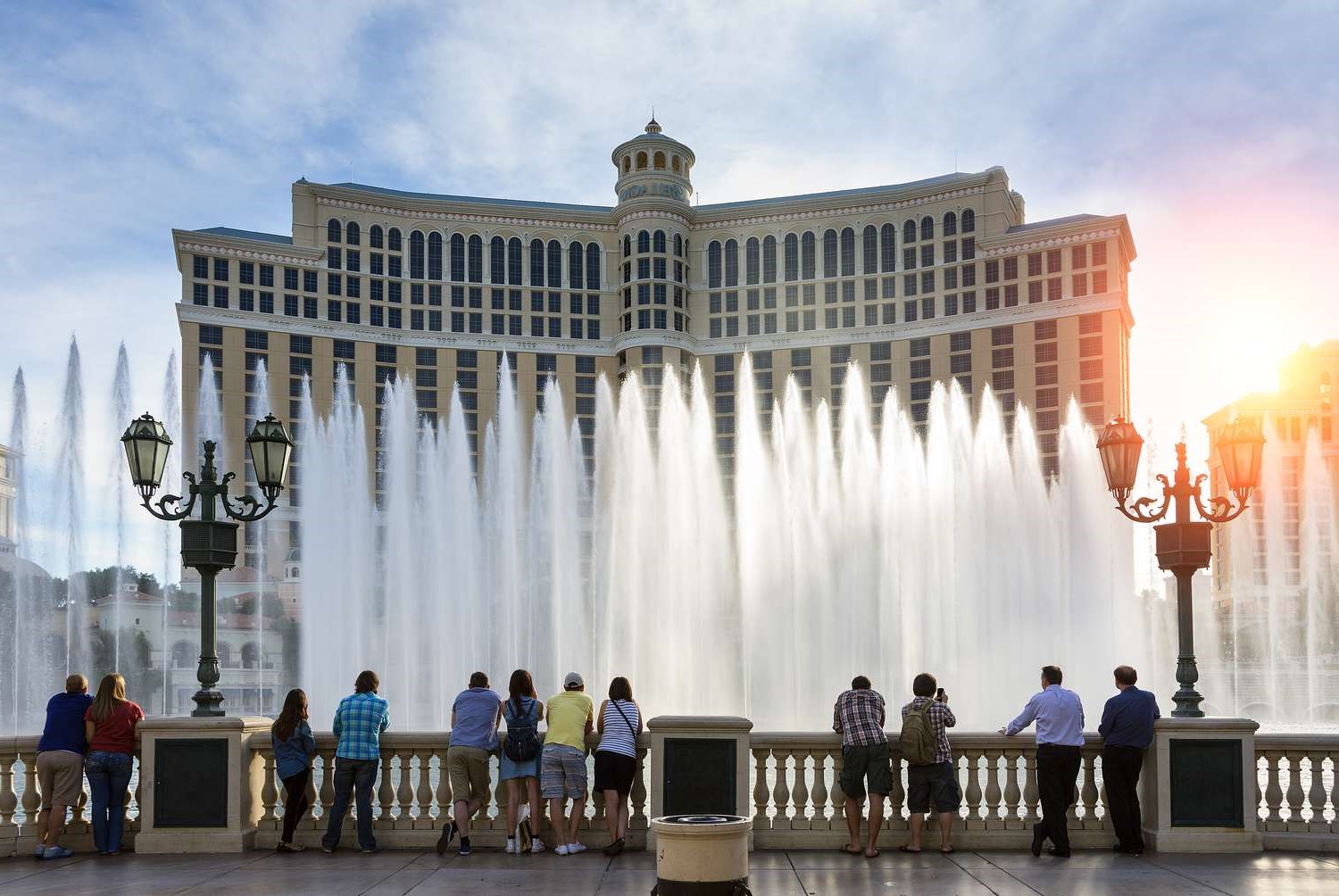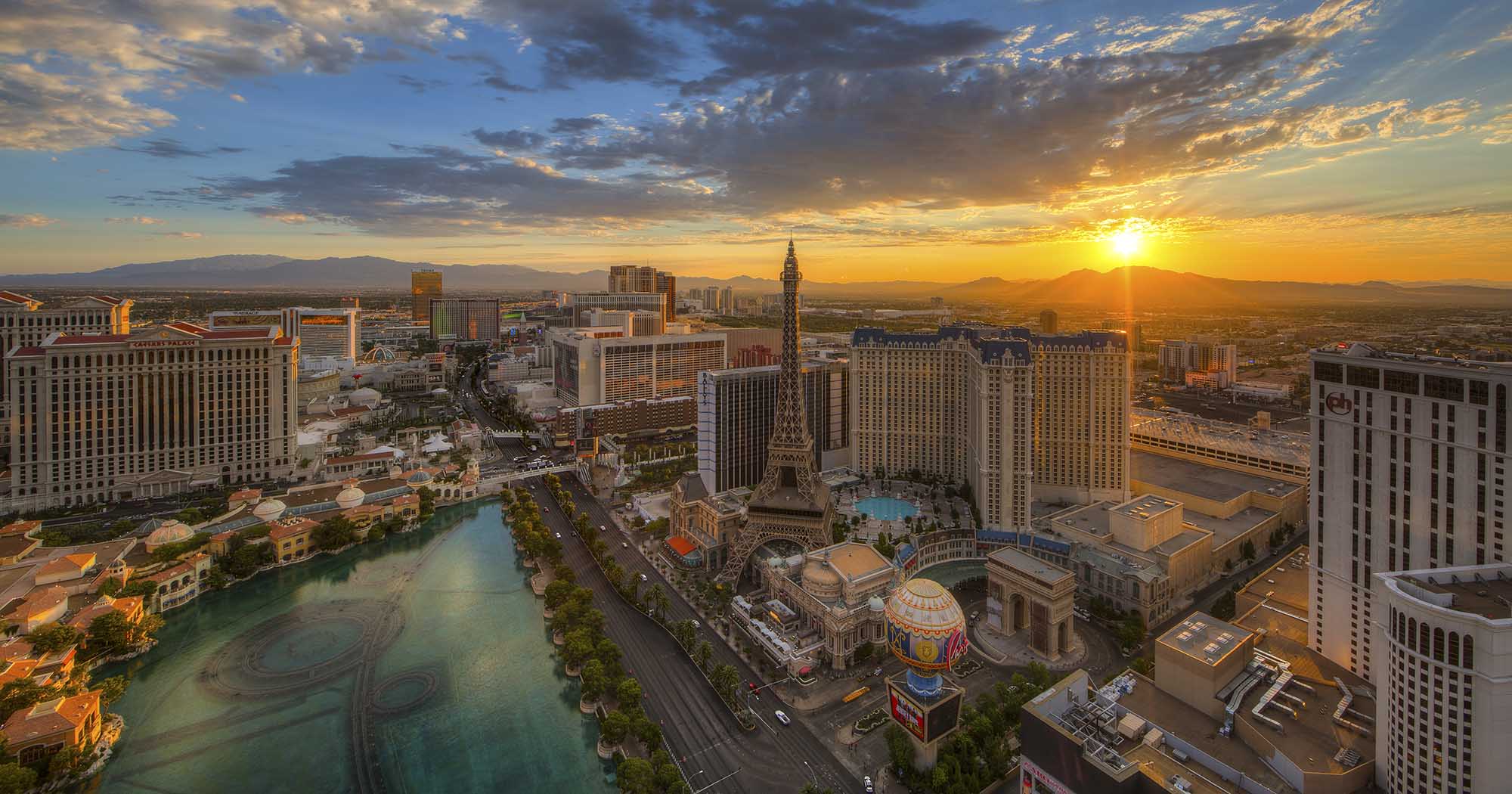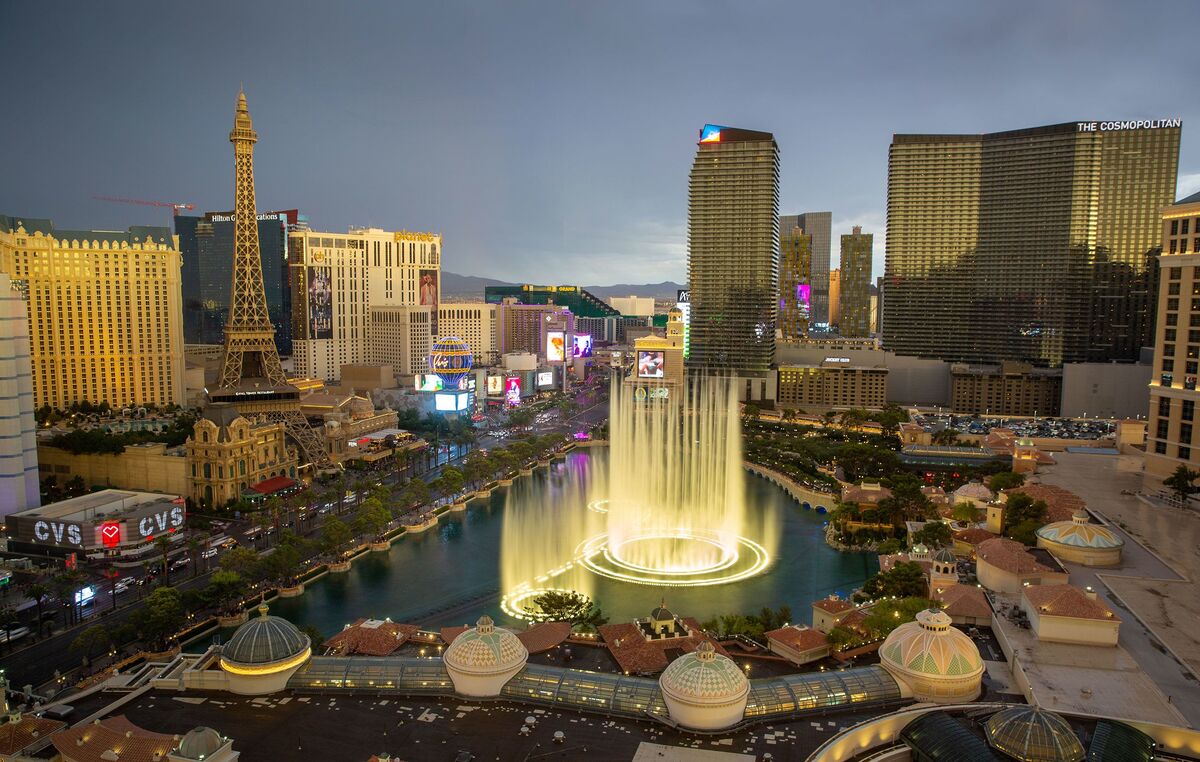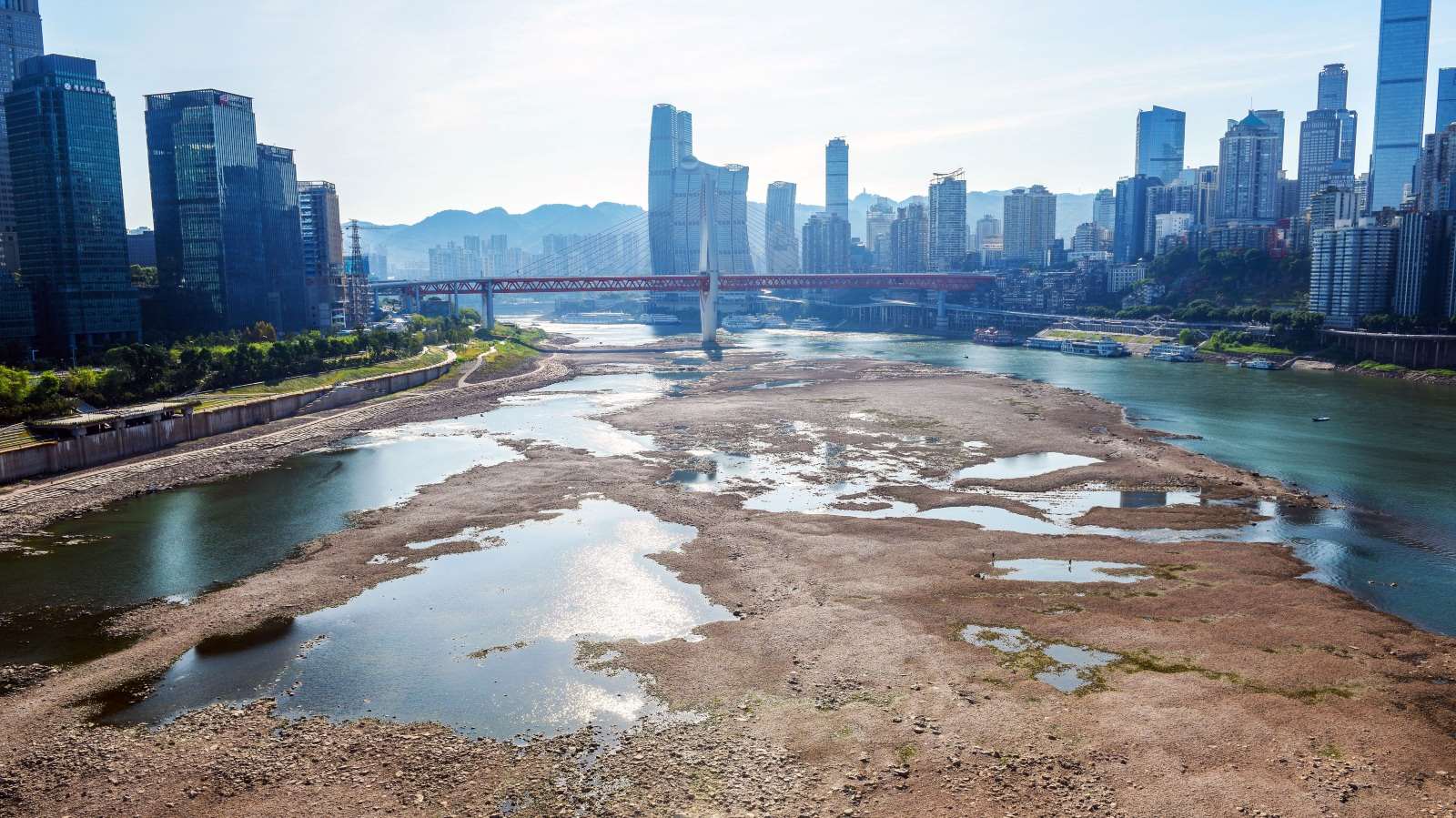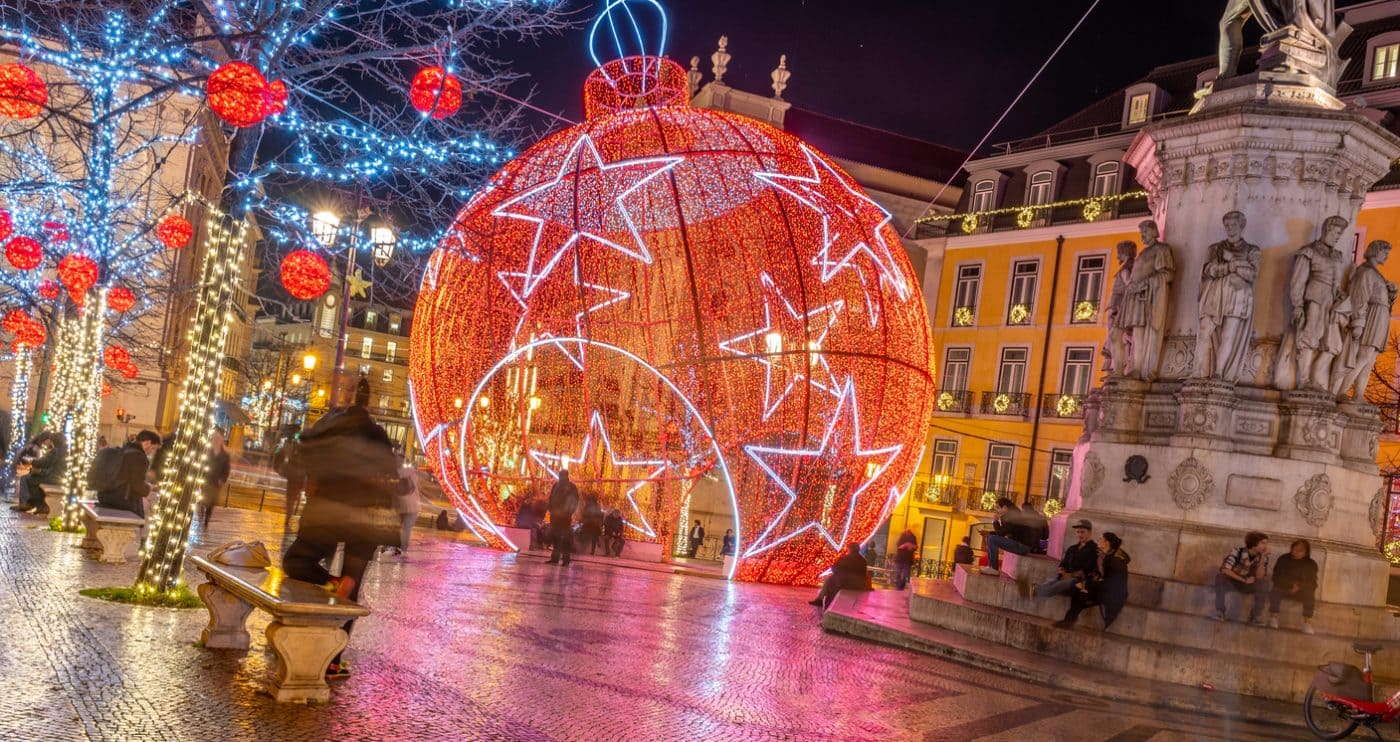Home>Weather and Climate>Exploring Las Vegas Winter Weather And Climate
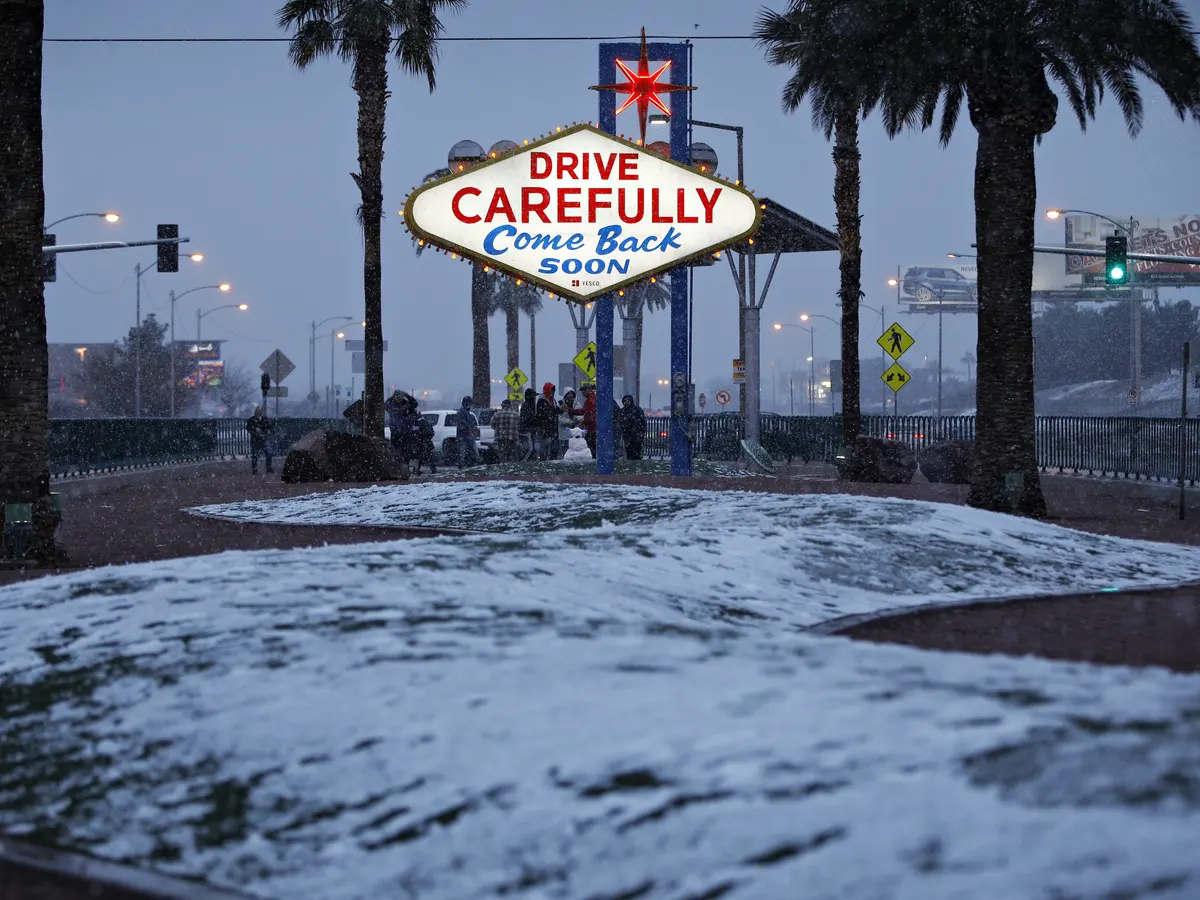

Weather and Climate
Exploring Las Vegas Winter Weather And Climate
Published: March 7, 2024
Discover the diverse Las Vegas winter weather and climate. Plan your trip with insights on the city's weather patterns and seasonal climate.
(Many of the links in this article redirect to a specific reviewed product. Your purchase of these products through affiliate links helps to generate commission for Temperatures.com, at no extra cost. Learn more)
Table of Contents
Understanding Las Vegas Winter Climate
Las Vegas, renowned for its scorching summers and vibrant entertainment scene, experiences a distinct shift in climate during the winter months. The winter climate in Las Vegas is characterized by relatively mild temperatures and minimal precipitation, offering a refreshing contrast to the intense heat of summer.
During the winter season, which spans from December to February, Las Vegas enjoys a moderate and pleasant climate. The city experiences clear, sunny days with crisp, cool air, making it an inviting destination for travelers seeking a reprieve from colder climates. The winter climate in Las Vegas is marked by a noticeable drop in temperatures compared to the sweltering heat of summer, creating an atmosphere that is conducive to outdoor activities and exploration.
Despite the overall mild nature of Las Vegas winter weather, occasional fluctuations in temperature can occur, adding an element of unpredictability to the climate. While daytime temperatures often hover in the comfortable range, nighttime temperatures can dip significantly, necessitating the need for layered clothing to stay warm during evening outings.
The unique geographical location of Las Vegas also influences its winter climate. Situated within the Mojave Desert, the city experiences relatively low humidity levels, contributing to the dry and arid winter conditions. This aridity, coupled with the city's desert climate, results in a distinctive winter climate that differs from many other popular winter destinations.
Understanding the winter climate in Las Vegas is essential for visitors and residents alike, as it allows for better preparation and planning when engaging in outdoor activities or exploring the city's diverse attractions. Whether it's strolling along the iconic Las Vegas Strip, embarking on scenic desert hikes, or partaking in outdoor events, having a grasp of the winter climate enables individuals to make the most of their experiences in this dynamic city.
In essence, the winter climate in Las Vegas offers a refreshing departure from the city's summertime heat, providing an inviting environment for outdoor pursuits and leisurely exploration. Embracing the nuances of Las Vegas winter weather enhances the overall experience of this vibrant city, allowing individuals to revel in its unique blend of entertainment, natural beauty, and mild winter climate.
Read more: Average Temperature In Las Vegas In January
Factors Affecting Las Vegas Winter Weather
The winter weather in Las Vegas is influenced by several key factors that contribute to the unique climate experienced during this season. Understanding these factors provides valuable insight into the dynamics of Las Vegas winter weather and its distinct characteristics.
Geographic Location:
Situated within the Mojave Desert in the southwestern United States, Las Vegas is marked by its desert climate, which significantly shapes its winter weather. The city's proximity to the desert exerts a notable influence on its winter climate, resulting in dry, arid conditions with minimal precipitation. The desert landscape plays a pivotal role in defining the winter weather in Las Vegas, contributing to the city's characteristic clear skies and relatively low humidity levels during this season.
Elevation:
Las Vegas' elevation, approximately 2,000 feet above sea level, plays a role in shaping its winter weather patterns. The city's elevation contributes to its moderate winter temperatures, with cooler evenings and milder daytime conditions. This elevation-induced climate moderation distinguishes Las Vegas from other winter destinations, offering a comfortable and inviting atmosphere for outdoor activities and exploration.
Weather Systems:
During the winter months, Las Vegas experiences the influence of various weather systems that contribute to its climate patterns. While the city generally enjoys clear, sunny days, occasional weather fronts can bring fluctuations in temperature and brief periods of cooler or milder conditions. These weather systems, including high-pressure systems and occasional cold fronts, contribute to the dynamic nature of Las Vegas winter weather, adding an element of variability to the overall climate.
Urban Heat Island Effect:
As a bustling metropolis, Las Vegas experiences the urban heat island effect, which can impact its winter weather. The city's extensive infrastructure, including buildings, roads, and urban development, can lead to slightly elevated temperatures within the urban area compared to the surrounding desert regions. This effect, while more pronounced during the summer, can still influence the winter climate in Las Vegas, contributing to slightly milder nighttime temperatures within the city limits.
Influence of Surrounding Terrain:
The surrounding terrain, including the nearby Spring Mountains and the expansive desert landscape, influences the winter weather in Las Vegas. The proximity of the Spring Mountains contributes to localized weather patterns, including the potential for cooler temperatures and occasional snowfall at higher elevations. Additionally, the vast desert expanse surrounding the city contributes to the arid, dry conditions that define Las Vegas winter weather, creating a distinct contrast to the winter climates of other regions.
Understanding these factors provides valuable insight into the intricacies of Las Vegas winter weather, shedding light on the diverse elements that shape the city's climate during the winter months. By recognizing the interplay of geographic, environmental, and atmospheric factors, individuals can gain a deeper appreciation for the unique winter climate that defines Las Vegas, enhancing their understanding of this dynamic city's seasonal characteristics.
Average Temperatures in Las Vegas During Winter
The winter season in Las Vegas brings a noticeable shift in temperatures, offering a refreshing departure from the scorching heat of summer. During the winter months, which span from December to February, Las Vegas experiences moderate and inviting temperatures that create an ideal environment for outdoor activities and exploration.
Daytime temperatures in Las Vegas during winter typically range from the mid-50s to low 60s Fahrenheit, providing a comfortable and pleasant atmosphere for outdoor pursuits. This moderate daytime warmth allows visitors and residents to engage in a variety of activities, from leisurely walks along the iconic Las Vegas Strip to outdoor dining and sightseeing. The mild daytime temperatures contribute to a welcoming outdoor environment, inviting individuals to immerse themselves in the city's diverse attractions and natural beauty.
As evening descends, Las Vegas transitions to cooler nighttime temperatures, with the mercury often dropping into the mid-30s to low 40s Fahrenheit range. This shift in temperature creates a crisp and refreshing ambiance, perfect for evening strolls, al fresco entertainment, and nighttime excursions. The cooler evenings offer a contrast to the warmth of the day, adding a touch of seasonal variation to the city's climate and enhancing the overall winter experience.
The moderate winter temperatures in Las Vegas are conducive to a wide range of outdoor activities, from exploring the scenic Red Rock Canyon to enjoying outdoor performances and events. Whether it's embarking on a desert hike, taking in the breathtaking views from high vantage points, or simply savoring the city's outdoor amenities, the inviting temperatures of Las Vegas winter create an atmosphere that beckons individuals to embrace the seasonal charm of the city.
The unique blend of moderate daytime warmth and cooler evenings during Las Vegas winter fosters an environment that is both inviting and versatile, catering to a diverse array of interests and preferences. Whether seeking outdoor adventure, cultural experiences, or simply a leisurely escape, the average temperatures in Las Vegas during winter set the stage for a memorable and enjoyable seasonal sojourn in this dynamic city.
Precipitation Patterns in Las Vegas Winter
Las Vegas, renowned for its arid desert climate, experiences distinct precipitation patterns during the winter months. The winter season, spanning from December to February, brings minimal rainfall to the city, contributing to the overall dry and clear conditions that characterize Las Vegas winter weather.
During the winter months, Las Vegas typically receives an average precipitation of less than 1 inch per month. This minimal rainfall aligns with the city's desert climate, where arid conditions prevail throughout the year. The scarcity of precipitation during winter contributes to the city's reputation for clear, sunny days and limited cloud cover, creating an inviting environment for outdoor activities and exploration.
The infrequent rainfall in Las Vegas during winter is often characterized by brief, sporadic showers that occur intermittently throughout the season. These light showers, while rare, can add a touch of variety to the city's winter climate, offering a brief respite from the predominantly dry conditions. The sporadic nature of winter rainfall in Las Vegas underscores the city's arid climate, emphasizing the contrast between its winter weather patterns and those of more temperate regions.
Snowfall is a rare occurrence in Las Vegas during winter, with the city experiencing minimal to no snow accumulation in most years. The surrounding desert landscape and the city's relatively low elevation contribute to the infrequency of snowfall, further accentuating the arid nature of Las Vegas winter weather. While snowflakes may occasionally grace the city with their presence, significant snowfall is a rare phenomenon, adding a touch of novelty to the winter climate.
The minimal precipitation patterns in Las Vegas during winter contribute to the city's overall dry and inviting atmosphere, making it an appealing destination for travelers seeking a break from colder, wetter climates. The scarcity of winter rainfall allows visitors and residents to enjoy outdoor activities, sightseeing, and leisurely pursuits without significant interruption from inclement weather, further enhancing the allure of Las Vegas as a winter destination.
In essence, the precipitation patterns in Las Vegas during winter underscore the city's arid climate, with minimal rainfall and rare snowfall contributing to the overall dry and inviting winter weather. This distinctive precipitation profile aligns with the city's desert environment, shaping the winter climate and enhancing the appeal of Las Vegas as a winter retreat for individuals seeking a respite from traditional winter weather patterns.
Read more: Exploring Colorado’s Winter Weather Patterns
Snowfall in Las Vegas: Occurrence and Impact
Snowfall in Las Vegas is a rare and captivating phenomenon that occurs sporadically during the winter months, adding a touch of novelty to the city's climate. While Las Vegas is renowned for its arid desert environment and minimal precipitation, the occasional occurrence of snowfall creates a sense of wonder and excitement among residents and visitors alike.
The occurrence of snowfall in Las Vegas is infrequent, with the city experiencing minimal to no snow accumulation in most years. The surrounding desert landscape, coupled with the city's relatively low elevation, contributes to the rarity of significant snowfall. When snow does grace the city with its presence, it often occurs in the form of light flurries, creating a picturesque contrast against the backdrop of the desert terrain. The sight of snowflakes gently descending upon the iconic Las Vegas landmarks, such as the Strip and surrounding mountains, evokes a sense of enchantment and transforms the city's familiar landscape into a winter wonderland.
The impact of snowfall in Las Vegas extends beyond its visual allure, influencing various aspects of the city's dynamics. While the accumulation of snow is typically minimal, it can briefly alter the city's ambiance, infusing a sense of seasonal charm and prompting residents and visitors to engage in winter-themed activities. The rare occurrence of snowfall in Las Vegas fosters a spirit of excitement and camaraderie, as individuals come together to savor the fleeting moments of winter enchantment within the desert setting.
From a practical standpoint, snowfall in Las Vegas can briefly affect transportation and outdoor activities, prompting adjustments in travel plans and recreational pursuits. While the city is well-prepared to manage the impact of snowfall, with infrastructure and services adapted to address winter conditions, the novelty of snow in Las Vegas adds an element of unpredictability and adaptability to the city's winter experience.
The occurrence of snowfall in Las Vegas serves as a reminder of the city's capacity to surprise and delight, offering a unique blend of desert allure and seasonal enchantment. It underscores the dynamic nature of Las Vegas' climate, presenting a captivating juxtaposition between its arid desert identity and the occasional embrace of winter's touch. The impact of snowfall in Las Vegas extends beyond its meteorological significance, leaving an indelible impression on the city's cultural fabric and the collective experience of its residents and visitors.
In essence, the occurrence of snowfall in Las Vegas, while rare, leaves a lasting impact that transcends the transient nature of winter weather, contributing to the city's narrative as a destination that continually defies expectations and invites individuals to embrace the unexpected.
Winter Weather Activities in Las Vegas
The winter season in Las Vegas sets the stage for a diverse array of outdoor activities and leisure pursuits, capitalizing on the city's inviting climate and dynamic atmosphere. From exploring natural wonders to indulging in entertainment experiences, Las Vegas offers a wealth of winter weather activities that cater to a broad spectrum of interests and preferences.
1. Outdoor Exploration:
Las Vegas' winter weather provides an ideal backdrop for outdoor exploration, inviting individuals to discover the city's natural and scenic attractions. From the breathtaking landscapes of Red Rock Canyon to the serene beauty of Lake Mead, outdoor enthusiasts can embark on hiking, biking, and sightseeing adventures amidst the mild temperatures and clear skies. The winter climate creates a comfortable environment for exploring the diverse terrain that surrounds the city, allowing visitors to immerse themselves in the captivating natural wonders of the region.
2. Scenic Tours and Sightseeing:
Winter in Las Vegas offers the perfect opportunity for scenic tours and sightseeing excursions that showcase the city's iconic landmarks and surrounding landscapes. Whether it's a leisurely drive along the picturesque Red Rock Scenic Byway or a guided tour of the Hoover Dam, the mild winter temperatures create an inviting setting for experiencing the region's rich history and awe-inspiring vistas. Visitors can revel in the panoramic views and cultural heritage that define Las Vegas and its environs, all against the backdrop of the city's distinctive winter climate.
Read more: March Weather In Las Vegas: What To Expect
3. Al Fresco Dining and Entertainment:
The winter weather in Las Vegas sets the stage for al fresco dining and entertainment experiences that capitalize on the city's inviting atmosphere. Outdoor dining venues, rooftop bars, and open-air entertainment spaces come to life during the winter months, offering visitors the opportunity to savor culinary delights and live performances amidst the mild temperatures and clear evenings. Whether it's enjoying a gourmet meal under the stars or attending an outdoor concert, the winter climate in Las Vegas enhances the allure of al fresco experiences, creating a vibrant and inviting ambiance for socializing and indulging in the city's renowned entertainment offerings.
4. Cultural and Artistic Pursuits:
Las Vegas' winter weather provides an ideal backdrop for engaging in cultural and artistic pursuits, from exploring outdoor art installations to attending open-air cultural events. The city's diverse cultural scene comes alive during the winter months, with outdoor art festivals, public installations, and cultural performances adding a touch of creativity to the inviting climate. Visitors can immerse themselves in the vibrant arts and cultural offerings that flourish amidst the city's distinctive winter weather, fostering a sense of inspiration and discovery.
5. Desert Adventures:
The winter climate in Las Vegas creates an inviting environment for desert adventures, allowing individuals to partake in unique experiences that showcase the region's desert landscape. From off-road excursions in the surrounding desert terrain to guided desert safaris and stargazing outings, the mild winter temperatures provide an ideal setting for embracing the allure of the desert environment. Visitors can engage in immersive desert experiences that highlight the natural beauty and rugged charm of the region, all within the context of Las Vegas' distinctive winter climate.
In essence, the winter weather in Las Vegas sets the stage for a rich tapestry of outdoor activities and cultural experiences, inviting individuals to embrace the city's diverse offerings amidst the backdrop of its mild and inviting climate. Whether seeking outdoor adventure, cultural enrichment, or culinary indulgence, Las Vegas' winter weather activities cater to a myriad of interests, creating a compelling and dynamic winter experience in this vibrant city.
